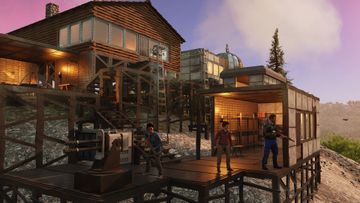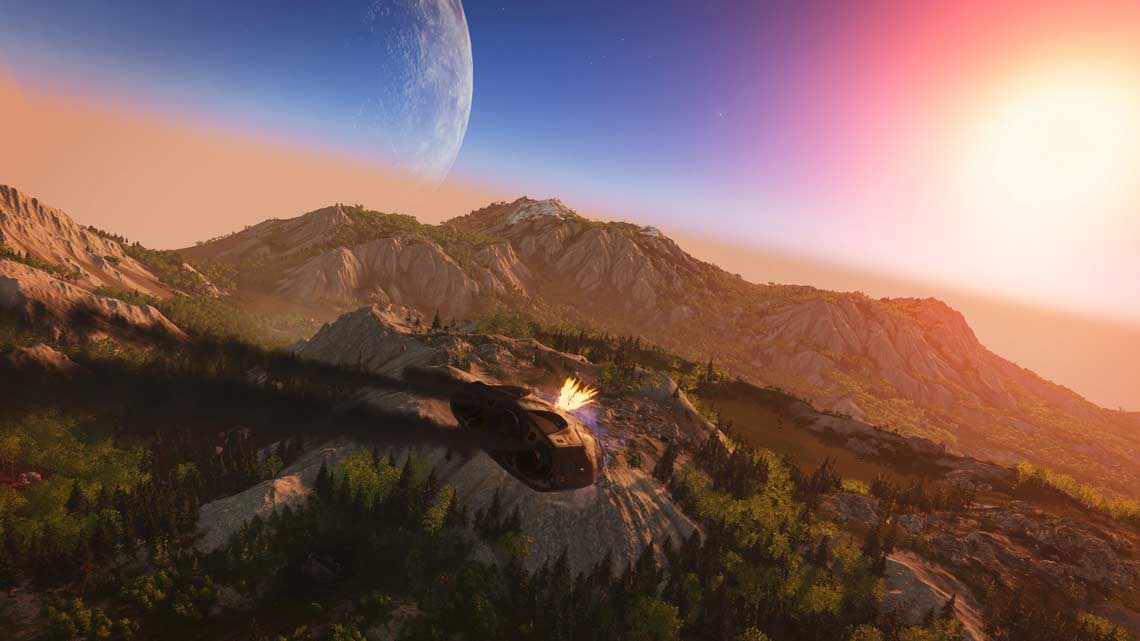
Stranded: Alien Dawn - Modular Base Building
Hey Survivors!
Have you been keeping up to date with all the exciting content we've been revealing over the past few weeks? We're looking forward to sharing with you even more interesting elements of the game that you can experiment with in Stranded: Alien Dawn.
Check out the content for the previous week's here:
Let's set the scene: Your survivors have just crash landed on an unknown planet, surrounded by strange and unfamiliar plants and animals. Everything seems beautiful and lush at first, but as you begin to take stock of their situation you quickly realise that there could be danger lurking just beyond the nearest hill or valley. Your job is to keep your survivors alive long enough to find potential escape or rescue for them. This will only be possible by building a solidified base to protect them from outside threats, while also researching new technologies to improve your home.
Will you build a humble cabin, or an imposing fort? The choice will be yours! It's time to explore Stranded: Alien Dawn's modular building system in more depth.

Base-Building
You will start off building a humble camp with basic necessities and temporary shelter, but in time you'll be able to expand into high-tech fortresses with complex defense systems and gadgets. You'll have a lot of freedom to build your own unique base, whether it be one large interconnected building with several rooms, or a sprawling community made up of many different buildings. Most your survivors’ build early on will be predominantly made of sticks, wood, hay, stone or scrap metal, all of which can be drawn from the environment by scavenging, mining, chopping, and collecting raw materials. Eventually you’ll gain access to more advanced materials, which you should definitely use.
The terrain in which you build your base will also differ each play through as your crash site be different for each game. Will your base be overlooking mountain hilltops or burrowed amongst lush greenery? Even the closest flora and fauna around you will differ. Using the environment around you as the terrain you are in can definitely have its advantages, which is something worth experimenting with!
Building your first camp should be quick and easy. Starting with a basic camp, you'll begin to fill the area with a small shelter with straw beds, a campfire, and a table and chairs for your survivors to have a place to eat.
As you settle down and Researching “Construction Basics” at a Research Bench will allow you to erect full buildings made up of separate rooms, in addition to decking them out with actual floors, walls and roofs. This personalised angle allows you to mix and match different construction materials, to create a truly unique aesthetic. Fancy a room with a stone floor, metal walls and a wooden roof? You got it! Just be aware that certain materials have specific insulation and support strengths, so a house made out of sticks might not your best option for surviving the winter.

Multiple rooms can be built, whether you make them small or expansive, and each area could have a specific purpose to it. Your survivors will appreciate having spacious individual bedrooms so their sleep won’t be disturbed. A separate recreation room will let your survivors ease their physical and mental stressors.
Different rooms will have different needs depending on their usage. It’s probably also best to keep crafting materials close to workshops, and foodstuffs close to your kitchens. Food and materials should generally be stored underneath a roof to prevent them from degrading, and refrigeration will keep your foodstuffs from spoiling too quickly. Living spaces will need to be heated in the winter or kept cool during the summer, and this could require electricity depending on your setup.
As long as you have a safe space for your survivors from the get-go you can continuously refine it and work slowly to expand and create the base of your dreams.
Research
Conducting research will open up new possibilities for you to improve and expand your base, in addition to opening up new mechanisms that can automate defenses, reduce manual labour, and even machine-print components, weapons, or food! The research tech tree is split into 5 categories: Resources, Power, Defense, Construction, and Breakthroughs. Each play-through starts with a different set of research Breakthroughs randomly selected from the list of all breakthroughs, which will have an impact on your research strategy. In the end, it's up to you what you research and when.
As you research you may even find new ways to upgrade the durability of your structures. A house once made of sticks and stones can be transformed into a concrete or brick home. These solid structures will need to be crafted from raw materials into concrete or bricks. As you continue playing, your to do list could get longer and longer! There are also fortifications and automated turrets you can build to create sturdier defenses, as well as weapon-smithing and fashioning armor to further protect your survivors from surprise attacks.

There is an extensive list of mechanics you can unlock through researching that we haven't touched upon, so we hope you are ready to fully immerse yourself into this world and discover all it has to offer.
That's it for this week's overview on all the creative ways you can utilise the modular building in Stranded: Alien Dawn. What sort of ways do you think you'll try and build your base? Let's discuss in the forums!
Have you been keeping up to date with all the exciting content we've been revealing over the past few weeks? We're looking forward to sharing with you even more interesting elements of the game that you can experiment with to enhance your experience on Stranded: Alien Dawn.
If you haven't already, come join the community over on the Stranded: Alien Dawn Discord. We also have Twitter, Instagram and Facebook where we've been posting all sorts of fun content! Don't forget to subscribe to our YouTube channel to keep updated with future trailers and gameplay videos.
See you next time!



